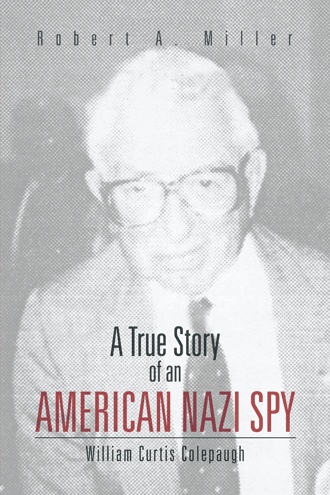On Monday, June 4, 1990, more than 250 prominent business leaders, colleagues, politicians, friends, and family gathered to honor William Curtis Colepaugh. I proudly delivered the keynote speech, joining many other members of the King of Prussia Rotary Club who spoke glowingly of William Curtis Colepaugh and his accomplishments in the community. To a standing ovation, Colepaugh walked up to the podium to receive the King of Prussia Rotary Club’s first-ever Distinguished Service Award.
All seventy-six Rotary members signed the plaque, which was engraved with the following inscription:
“In recognition of his long, faithful, and distinguished service and his countless valuable and significant contributions to the objectives and success of all levels of Rotary including International, District, and Local, and in appreciation of his gracious, gentlemanly and friendly spirit of fellowship, his example as a family man, his leadership, his patriotic furor and his consistent dedication to the principles of Rotary.”
Bill was chosen over many Rotarians who could have been given such an award, mainly because he quietly went about his business of contributing for many years in an unusually low-key manner, never seeking recognition or notoriety. On that day, Colepaugh had had no idea that he was to receive this award and was totally unprepared when asked to approach the podium. He thanked everyone. The audience stood again and applauded. He shook hands, exchanged hugs, posed for photos, and shed tears. All seemed well.
What this unsuspecting group of distinguished Rotarian American citizens did not know was that they had just bestowed the King of Prussia Rotary Club’s highest honor on a convicted American Nazi spy. It was during World War II that Colepaugh, a Connecticut-born Yankee, was led by Hitler’s Gestapo and trained in espionage and sabotage under Hitler’s SS in Nazi Germany. It has been forty-six years since Colepaugh landed clandestinely by U-boat on a Maine beach late at night on November 29, 1944, and subsequently surrendered almost one month later on December 26. A military commission tried and convicted him of espionage on February 14, 1945, and sentenced him to “hang from the neck until dead.”
How did he get from being “hanged by the neck until dead” in 1945 to being honored by an American community service club in 1990? Answering this question is the purpose behind writing this biography.
By almost anyone’s standards, treason is the worst possible crime that anyone could commit. It could result in the death of perhaps millions of human beings and possibly destroy an entire country. Bill committed treason under his own free will. There cannot be excuses for him, only regrets. Although no deaths could be attributed directly to his actions, one could argue that at least indirectly he was responsible for the deaths of those sailors aboard the merchant ship Cornwalis. If Bill would have surrendered in that diner in Bangor on November 30, 1945, several hours after stepping off the U-boat, the authorities would have been made aware of the presence of U-1230, and thus the fate of the Cornwalis’s crew may have been different.
I presented in this biography an objective truthful account as best as possible of the events of Bill’s life. But it must be considered that the government records used as a basis for this biography that include FBI files, trial records, and prison records may be misleading by intention or by purposeful omission of factual data.
For example, it is clear that FBI director J. Edgar Hoover controlled the release of FBI information. Consider how he handled the news releases about Boy Scout Harvard Hodgkins. How can we be sure that the FBI files were not similarly “managed” under his direction.
It is also very possible that the trial records were purged for the sake of national security during time of war. Earl Connelly’s strange testimony during the trial certainly leaves some unanswered questions. Also, why wasn’t the subject of photography brought up during his trial? There was more than enough evidence to justify it.
It is also possible that the released prison records withheld certain information that could be interpreted as controversial or detrimental to the image of the federal prison system.
I believe there is no doubt, however, that Bill atoned for his crime through his actions as a good citizen, both in the fifteen years he spent in prison and the forty-five years he spent from the time of his release in 1960 to his death in 2005.
By anyone’s definition, Bill had an incredible life. One could describe him during his early years as “an ordinary, often ineffectual person who indulged in fantastic daydreams of personal triumphs.” But unfortunately that description has already been assigned to James Thurber’s character, Walter Mitty.


